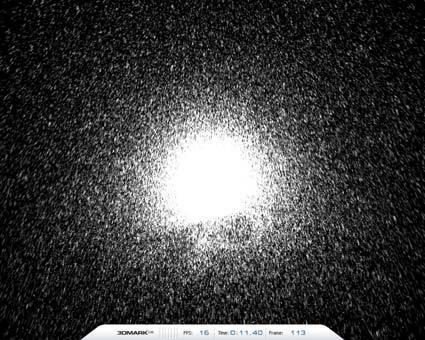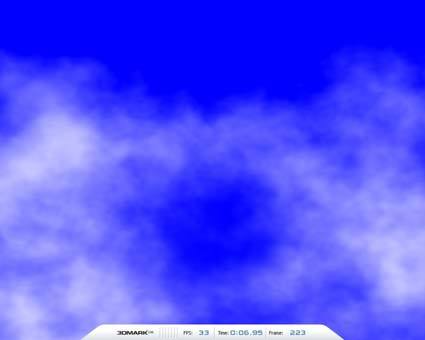3DMark06 Under the Magnifying Glass
Other Tests, Continued
The first of the new tests is a Shader Model 3.0 particle test. The test runs simple trajectory using timestepping (breaking up time into steps) via Euler integration, a differential equation method. In total, there are 409,600 particles being affected by gravitational forces and air resistance, and the score is output in frames per second.
The test requires SM 3.0 hardware with Vertex Texture Fetch (VTF) support. This technique is used for displacement mapping, where the vertex and pixel shaders share the data with each other. This feature is not supported on ATI hardware, but ATI's X1000 series cards are capable of FP32 precision, which means that the hardware can use a render to buffer capability to get the same results. Chips based on the R4xx design (Radeon X800 series) can only do this with FP24 precision.
The last test is based on Perlin noise summations, named after their creator, Ken Perlin. This test uses "six octaves of 3-dimensional Perlin simplex noise using a combination of arithmetic instructions and texture lookups." Perlin noise is a mathematical random number generation function technique that produces smoothed-out random values. The link provided is to an article that describes the summation of noise functions to create Perlin noise. Perlin noise made its way into graphics because it provides a great way to create marbled textures that can be used in stone, flame and cloud rendering. The shader program used in this test comprises 495 instructions: 48 texture lookups and 447 arithmetic instructions. The score for this test is also output in frames per second.
Get Tom's Hardware's best news and in-depth reviews, straight to your inbox.


